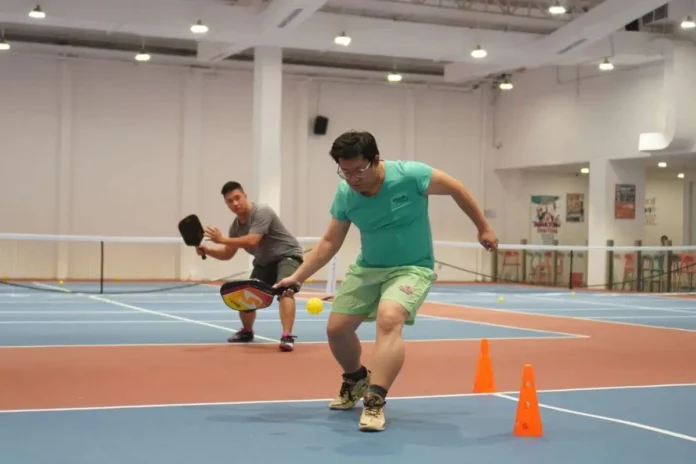How to Support the Partner in Pickleball: Pickleball coach John Cincola emphasizes that great doubles play isn’t just about highlight-reel shots. Instead, he advises players to focus on smart positioning and teamwork. By adjusting movement based on a partner’s actions, players can gain a strategic edge, making it easier to transition to the kitchen line and protect their teammates.
Key to Effective Court Balance
Cincola teaches a fundamental principle: if a player isn’t hitting the ball, they should still be active. This means adjusting positioning based on the ball’s trajectory and the partner’s location. He explains that a player must observe where their partner is standing, assess the opponents’ positions, and predict the likely shot to balance the court effectively.
“If you’re not doing something, do something,” Cincola often tells his students, reinforcing the idea that movement without the ball is essential. As a partner hits a shot, the other player has the freedom to adjust and optimize positioning, creating a better opportunity to recover together.
Transitioning to the Kitchen Line Effectively
Applying this concept to the third shot drop and transition game is crucial for effective court movement. When one player hits a third shot, the other should take two steps forward, shift slightly toward the middle, and open their body to monitor their partner and the opponent’s positioning.
Cincola recommends encouraging partners to hit third shot drops crosscourt. This strategy provides a longer shot path with a lower net, increasing consistency. More importantly, it allows the supporting player to step forward and block aggressive responses from opponents, shielding their partner from deep counterattacks.
Early Positioning and Tactical Awareness
Timing is crucial in positioning. Cincola stresses that players should move forward as soon as they recognize that their partner is hitting the shot. Arriving in position before the ball is struck allows time to assess whether their partner is balanced and whether the shot is well-placed.
If the shot is executed well, the supporting player can move even closer to the net, preventing opponents from attacking the feet of their partner. If the shot is poor, the player can retreat to play defense instead of overcommitting.
Real-Game Examples in Action
Cincola demonstrates these strategies in real play scenarios:
- Point 1: After serving, Cincola sees the return going to his partner Stefano. He immediately steps forward and shades toward the middle. When Stefano’s drop lands well, Cincola moves up, blocking an aggressive counterattack and allowing both players to reach the kitchen line.
- Point 2: When Cincola receives the return, Stefano mirrors his positioning tactics. As Cincola drives the ball, Stefano shifts forward and middle, intercepting a volley and winning the point.
- Point 3: Another shot goes to Stefano, and Cincola moves ahead. Stefano’s drop forces a weak return, enabling both players to transition smoothly and win the rally.
By mastering these movements, players can better support their partners, control court positioning, and advance effectively, making them more desirable teammates.
News in Brief: How to Support the Partner in Pickleball
Pickleball coach John Cincola highlights smart positioning in doubles play. He teaches players to move strategically when not hitting, balancing the court for better teamwork. By stepping forward, shielding partners, and encouraging crosscourt drops, players can transition effectively. Real-game examples demonstrate how these techniques improve performance and increase winning chances.
ALSO READ: The See-saw Effect in Pickleball: Kyle Koszuta on Improving the Pickleball Defense

